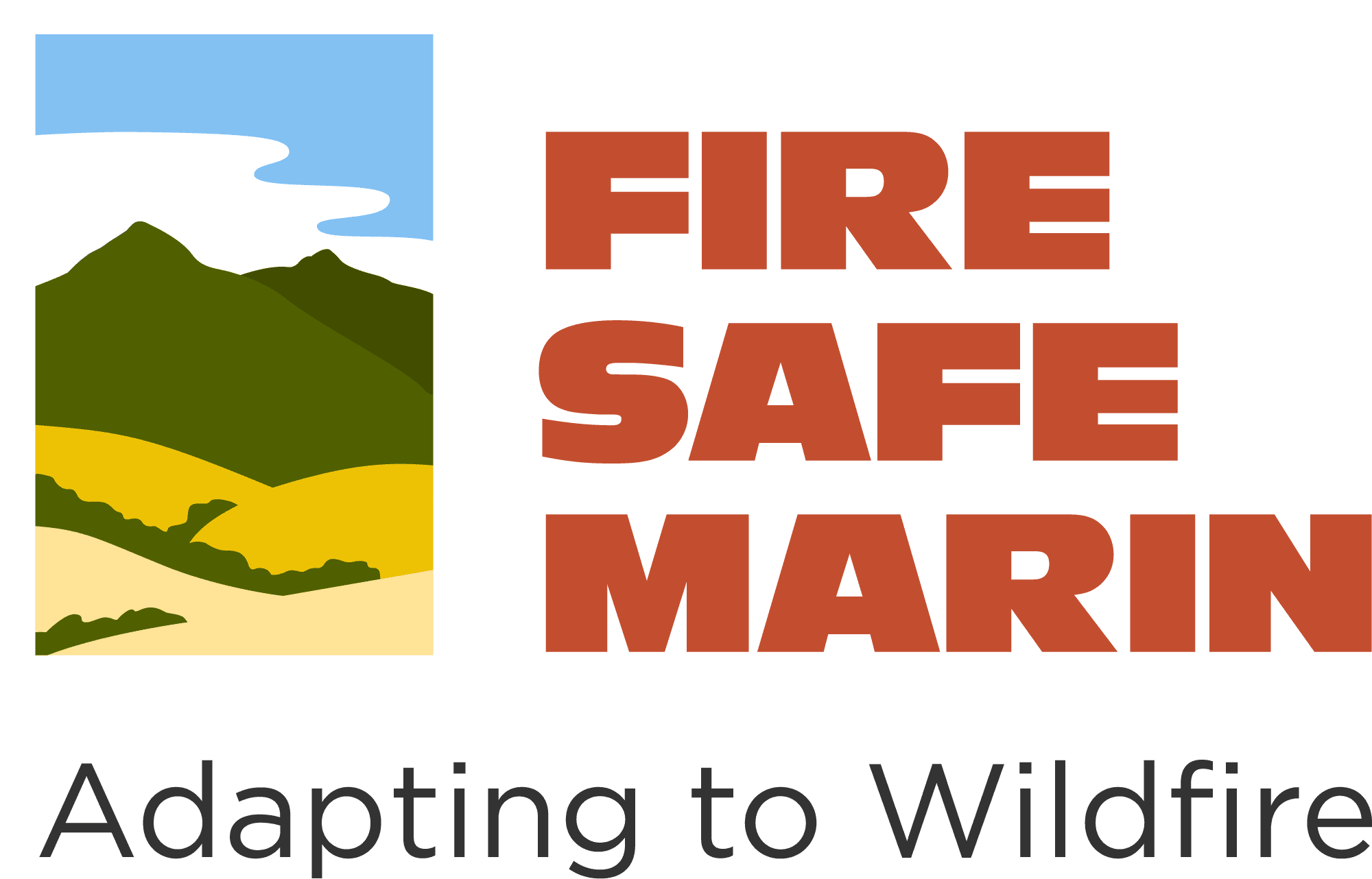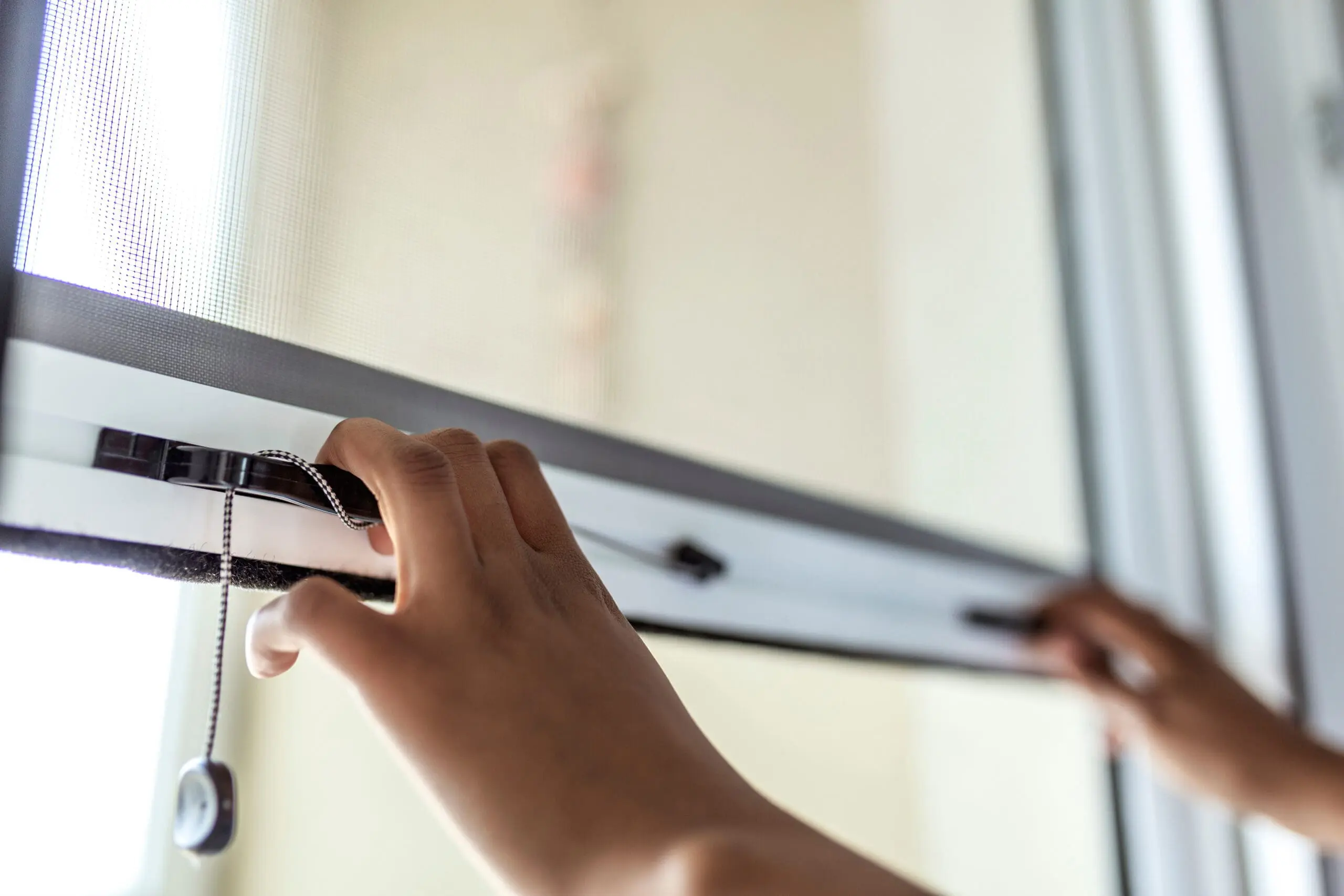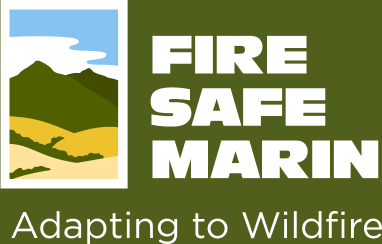IN THE EVENT OF AN EMERGENCY THIS SITE IS NOT MONITORED. FOR CURRENT INFORMATION GO TO HTTPS://EMERGENCY.MARINCOUNTY.GOV.
How to Evacuate
Find out when to evacuate, where to go, and how to get to safety.
The Marin Wildfire Prevention Authority conducted an extensive evacuation study which found that there are three major factors which contribute most to civilian fatalities:
- Extreme fire behavior conditions
- Failures and/or delays in alerting and communication systems
- Delays in evacuee departure due to last-minute evacuation or an inability to evacuate
Before an Evacuation
Follow these steps so you and your family are prepared to evacuate at a moment’s notice:
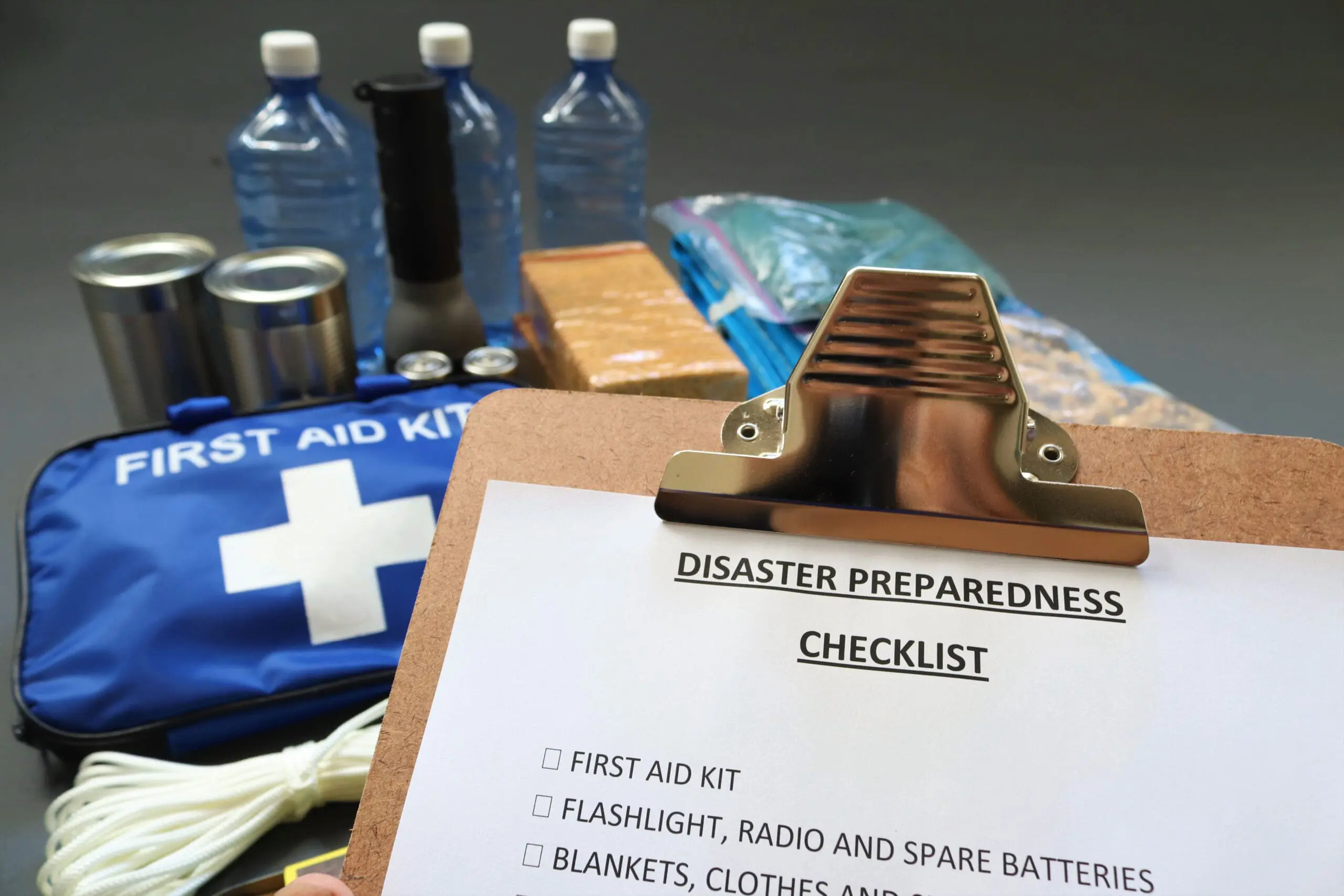
When to Evacuate
When a Red Flag Warning has been issued, or if a fire is burning nearby, you should take steps to prepare for the possibility of evacuation. Leave immediately if ordered. Don’t wait for an evacuation order if you feel unsafe or conditions change; leave early if unsure.
A summary of the evacuation checklist:
- Monitor all available information sources.
- Notify members of your household and neighbors to alert them to prepare for evacuation.
- Dress for survival.
- Grab your evacuation go-kit, evacuation map, car keys, IDs, your mobile phone, and a portable phone charger.
- Locate pets and place them in carriers, along with water, food, and medication.
- Back your car into your driveway, and load it up with your things so you’re ready to go at a moment’s notice.
- Regularly update an out-of-area contact of your phone number, location, and status.
- When you leave, drive defensively, head downhill, and stay in your car until you reach safety.
Leave immediately if you receive a notification or alert to avoid being caught in fire, smoke, or road congestion. Don’t wait to be ordered by authorities to leave if you are unsure, feel threatened, or lose power or communications. Law enforcement will direct the evacuation and they will keep intersections open and moving, but their resources may be limited. Evacuating early (before evacuation is ordered) helps keep roads clear of congestion, and lets fire apparatus move more freely to do their job. If you are advised to leave, do not hesitate!
The Evacuation Order
- The fire incident commander will issue the evacuation order through the Office of Emergency Management and will determine the areas to be evacuated and escape routes to use depending on the fire’s location, behavior, winds, terrain, etc.
- Law enforcement agencies are responsible for enforcing an evacuation order. Follow their directions promptly.
- You will be advised of potential evacuations as early as possible by Alert Marin. You must first register to receive alerts.
- You must take the initiative to stay informed and aware. Listen to your radio (AM 740, and others) and TV for announcements from law enforcement and emergency personnel.
- You may be directed to temporary assembly areas to await transfer to a safe location.
Evacuation Terminology
The terms “voluntary” and “mandatory” are often incorrectly used to describe evacuations. In Marin, fire agencies and law enforcement will use the terms “Evacuation Order,” “Evacuation Warning,” and “Shelter In Place” to alert you to the significance of the danger and provide basic instructions. All evacuation instructions provided by officials should be followed immediately for your safety.
- Evacuation Order: means there’s an immediate threat to your life and you need to leave right now! It’s critical to follow all directions from law enforcement to ensure you and your family evacuate safely.Leave now!
- Evacuation Warning: means there’s impending danger to your life or property. If a warning is given assume an evacuation order will follow. Start gathering important items for your family and pets. Any individuals who need extra time to evacuate, or anyone with large animals, should pack-up and leave when a warning is issued.
- Shelter in Place: Stay in your current location, the safest nearby building, or the safest unburnable area. Most often issued when evacuation isn’t necessary and quick fire department access is required, but in some cases may be issued if evacuation is too dangerous.
If You Are Unable to Evacuate on Your Own
- Ask a neighbor to assist you or give you a ride. Plan ahead and make a list of neighbors who may be able to assist you.
- If first responders are in your neighborhood, attempt to notify them that you require assistance.
- Call 911 if you are disabled or need assistance to evacuate. Be aware that emergency resources will be limited during a major wildfire.
Children & Schools
Public and private schools will attempt to notify parents and evacuate children only if time allows. Schools may need to shelter in place and will protect children in safe places on campus if a wildfire strikes without time to evacuate.
When an evacuation is ordered, parents may not be allowed into the evacuated area to pick up students. Communicate this with your children in advance, and send them to school prepared with the tools they need to communicate and protect themselves, such as extra food, long cotton clothing, and a list of primary and alternate emergency contacts and numbers.
Where to Go
When you’re making an evacuation plan, first check to see whether you can stay in a hotel or with friends and family, which may be the safest options during the pandemic. If you can’t make other arrangements, details of evacuation centers will be provided by the County through Alert Marin, Nixle, social media and news agencies.
Stay with friends or Stay in a Hotel
If you have relatives or friends outside the evacuation area whom you think might have space to accommodate you, ask them ahead of time so they’re prepared for you.
Check with hotels, motels or campgrounds outside your area to see whether they can accept you.

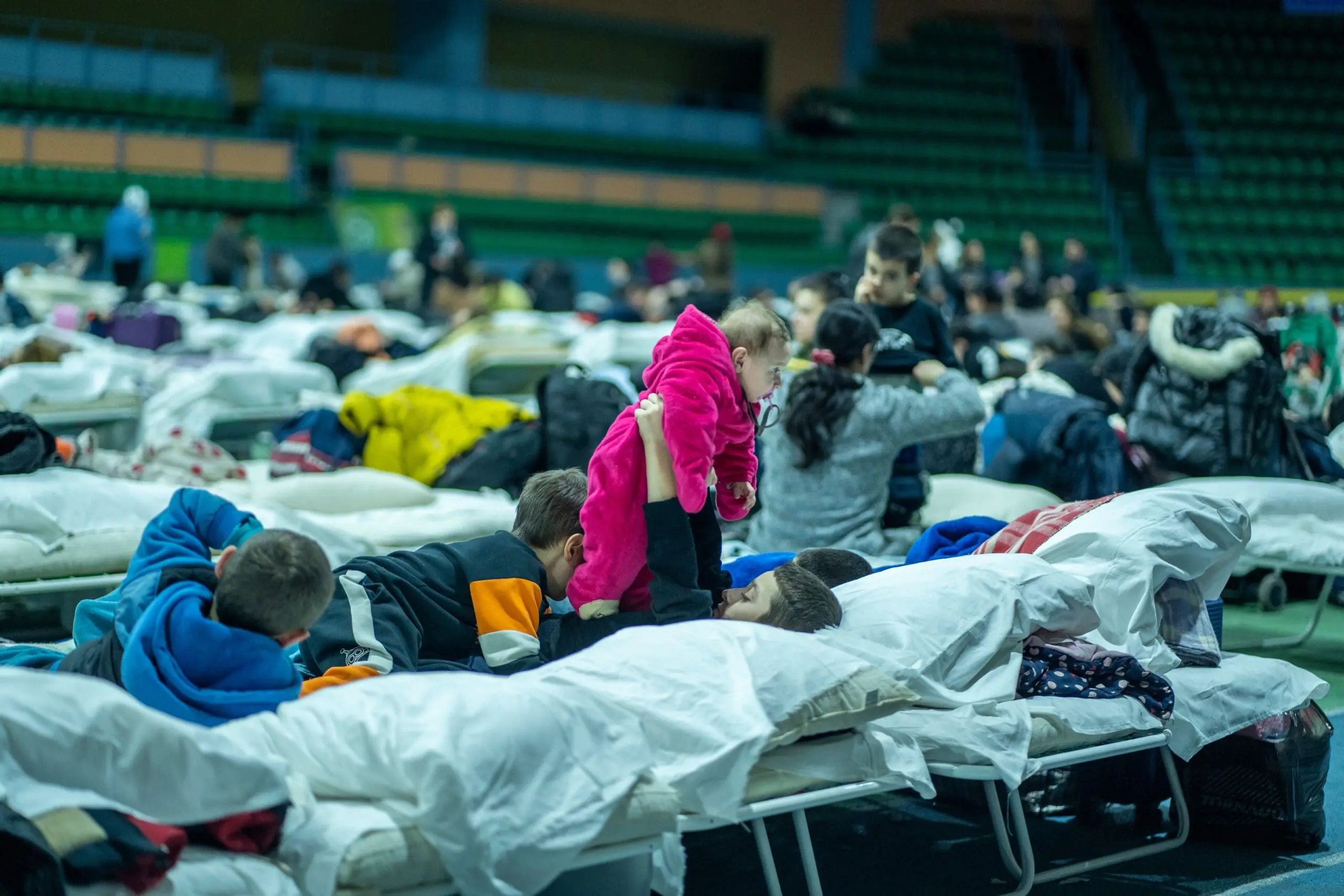
Evacuation Centers
If staying with a friend or in a hotel isn’t an option, you can go to an evacuation center. It’s wise to research which center you’d be going to ahead of time — because you don’t want to be researching your destination as you scramble to evacuate.
Emergency managers will attempt to provide information on safe evacuation centers if time allows. Plan to drive towards the highway 101 corridor. The Marin Civic Center Fairgrounds is a pre-designated evacuation facility and a safe location for evacuees. For small-scale local evacuations or disaster recovery and sheltering, local schools, community centers, or large parking lots may be used.
Details of nearby evacuation centers will be provided by your county, so find your nearest evacuation center.
The American Red Cross also provides evacuation shelters across California. Check to see whether there’s a Red Cross evacuation shelter near you.
Temporary Refuge & Assembly Areas
Open locations free of unburned vegetation may be safe places to wait while a fire passes. If your evacuation route is blocked or impassable, a wide parking lot, ball field, or even a house or commercial building may provide temporary shelter. Parking your car, with windows up, in a location far from vegetation or structures, and waiting for the fire to pass, is often a safe option for sheltering in place. Authorities may choose to evacuate the temporary refuge areas en-masse when it’s safe to do so.
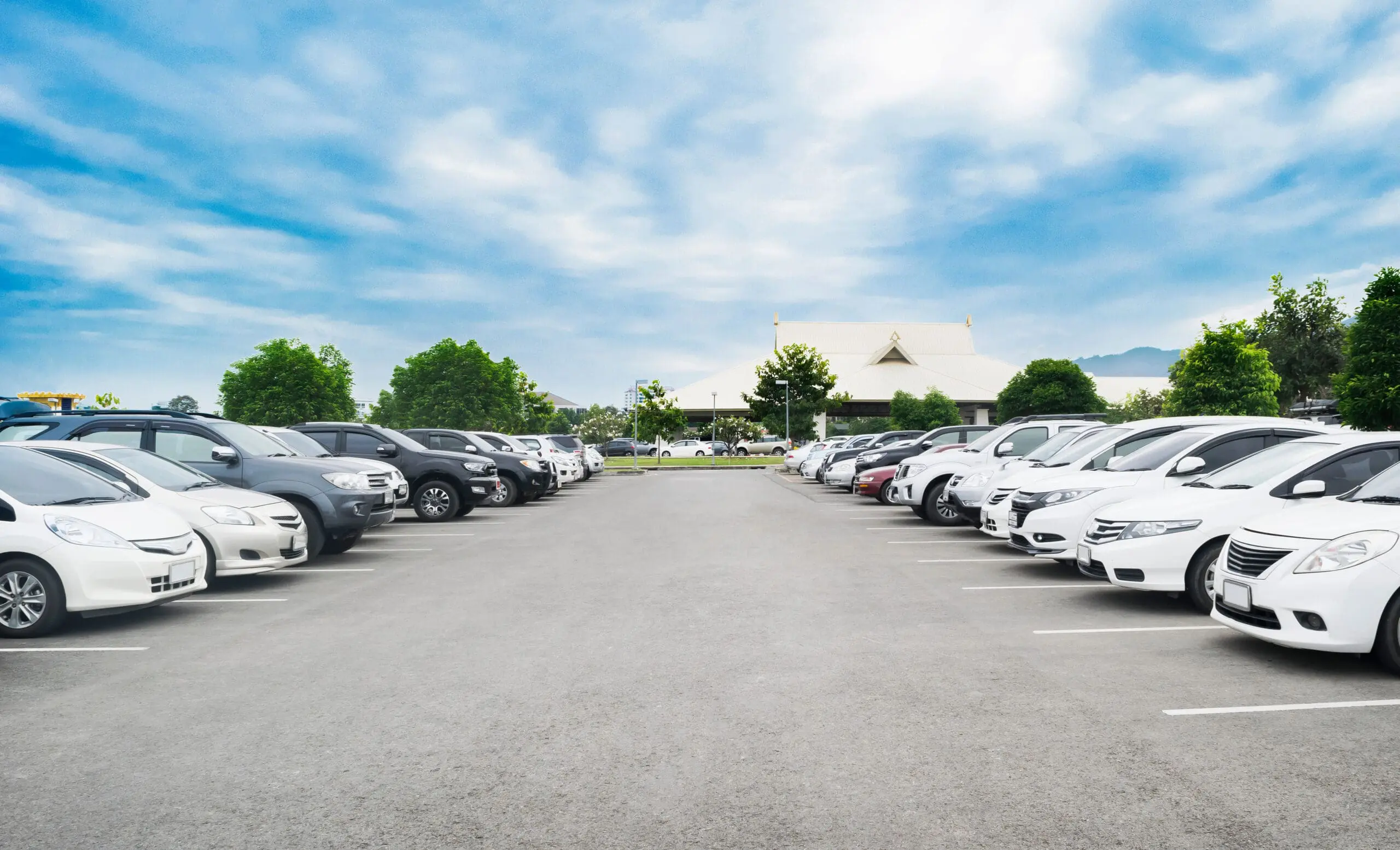
Shelter in Place
Wildfires are unpredictable and spread quickly. Even if you’ve prepared in advance, you may be required to shelter in place if ordered or if you find yourself trapped by a wildfire. To survive this frightening scenario, it is important to remain calm and keep everyone together. Prepare yourself mentally for darkness (even during the day), noise, chaos, and the natural urge to flee the safety of your shelter. If you are unable to evacuate, it’s probably safer inside a car or building where your airway, eyes, and skin are protected.
Take shelter in the nearby place that is best able to withstand the fire. This may be your home, another building made of more resistant materials or that is less exposed to burning vegetation, your car, or an open outdoor area like an irrigated playing field or parking lot far from vegetation. Stay calm and together while the wildfire passes. When directed, or when the fire outside subsides, move to a safer area.
If safe evacuation is not an option, follow these steps:
- A building should be your first choice for shelter if evacuation is not possible.
- Close all doors and windows and leave them unlocked.
- Keep car keys, cell phone, ID, and flashlight with you.
- Gather all family members and pets (in carriers) and lay down near the front door, protecting your airway by breathing near the floor if it becomes smoky or hot.
- Monitor the fire and be observant. Watch for small (spot) fires.
- Call 911 and let them know your location.
- Leave the house only if it becomes too hot or smoky inside, or when it’s obviously safer outside.
- If your escape route is blocked and there is no safe building nearby to take refuge in, park and stay in your car – it is far safer than being out in the open.
- Never attempt to evacuate by unpaved fire roads.
- Find a place to park on pavement that has little or no vegetation, in an outside turn if on a hillside.
- Turn on headlights and emergency flashers to make your car more visible through heavy smoke.
- Close all windows and doors, shut off all air vents and turn off the air conditioner.
- Get below the windows, under blankets (preferably wool), and lie on the floor to shelter yourself from radiant heat if it becomes hot.
- Call 911 and let them know your location.
- Stay in the vehicle as long as possible.
- Wait until the fire front passes and the temperature has dropped outside, then get out and move to a safe area that has already burned.
Getting to Safety
Media images of burned cars have left many California residents with the misconception that cars are highly vulnerable to wildfires–the opposite is true. Your car provides a tremendous amount of protection. Made of glass and steel, it protects from hot gasses, embers, and radiant heat. As long as your car stays on pavement, it is extremely resistant to burning. With an AM/FM radio, air filtration and air conditioning, headlights, and protection from heat, your car is like a survival suit for wildfires.
Driving tips:
- Car pool if you can
- Families should only take one vehicle to reduce congestion
- Turn your headlights on.
- Wear your seatbelt.
- Pick up neighbors, especially elderly or disabled residents who may be unable to evacuate on their own.
- Fill every seat! Carpool!
- Turn on inside air and air conditioning.
- Tune to local news radio stations.
- Proceed slowly and calmly.
- Don’t pass cars when visibility is low.
- Don’t panic in traffic.
- Stay on pavement.
- Avoid stopping on “inside turns” on roads where unburned vegetation lies in a drainage below the road.
- Take the car that is most capable of getting you out alive: an SUV (if possible) with the fullest tank of gas.
- Stay in your car or a refuge area if trapped.
- Fire roads are for firefighter use and are not a safe option for evacuation. Stay on pavement, in your vehicle, if possible.
If you’re worried about how you’ll leave your home without a car, we recommend that you work with your neighbors — or nearby friends and family, if you have them — to coordinate. If you’re relying on someone else’s car to evacuate, you should leave your home “sooner rather than later” because your ride might not be able to physically get to you if you wait too long.
It’s important that your emergency bag is light enough to transport without a car.
Your Evacuation Route
When a wildfire threatens your community, emergency managers will determine areas to be evacuated, and routes to use, depending upon the fire’s current and predicted location. Law enforcement officers are responsible for enforcing an evacuation order. Follow their directions promptly.
If time allows, officials will attempt to advise you of the safest evacuation routes. You must take the initiative to keep informed and alert. Listen to your radio for updates on changing conditions. Monitor Alert Marin and Nixle for notifications and updates. You may be directed to temporary assembly or refuge areas to await transfer to a safe location.
Things to remember while evacuating:
- Take the shortest PAVED route to a place of refuge in an open area – preferably a wide, paved road near a valley floor (this is usually the same route you take to get to the grocery store).
- Carry an evacuation map with at least two routes (if possible) in your go-kit.
- The darkness and flames of a fire can be disorienting. Familiar landmarks may not be recognizable during a fire.
- Don’t evacuate by fire road or “cross country” trails where you might be exposed to unburned vegetation.
- Never evacuate uphill or into open-space unless directed to do so by fire or law enforcement authorities.
- Law enforcement or emergency personnel may direct you to an alternate route. Always follow their directions.
- Drive your planned route of escape before an actual emergency. This is most likely the route you normally take to leave your community, as that’s typically the shortest and is the route you’re most familiar with.
- Don’t panic in traffic. The goal of evacuating (any emergency) is to get from a dangerous place to a safer place. Being in a car, on a paved road is a relatively safe location during a wildfire.
- If you are in traffic on a hillside, avoid “inside turns” where a drainage or unmaintained, unburned vegetation lies below the road.
- Abandoning your car to evacuate on foot is almost always MORE dangerous than waiting inside your car.
- Panic is deadly.
If you live in a “one way in, one way out” neighborhood, as is common in Marin, your escape route is predetermined.
- Use the “one-way-out” direction and leave! Drive paved roads towards your neighborhood’s exit, and to the nearest town away from the fire.
- Follow instructions in the alert messages if they provide evacuation shelter or escape route information.
- Do not attempt to evacuate by fire roads or open spaces where you might be exposed to burning vegetation. Fire roads are almost always more dangerous than being in your car on the pavement.
- Don’t worry about fire engines blocking your way out of your neighborhood. When evacuation has been ordered, the fire’s Incident Commander will instruct fire engines not to enter areas where evacuation is occurring and two-way passage is not possible. Evacuation is the number one priority for firefighters.
- Stay calm. Don’t panic.
- Remember that your car provides a tremendous amount of protection from heat, smoke, and embers. It’s more dangerous outside of your car.
- The presence of fire or flames on the roadside does not necessarily mean your road is blocked. You can usually safely drive when there is a fire burning on the roadsides as long as you stay on the pavement.
- Being stuck in traffic in your car, on unburnable pavement, is usually safer than being exposed on foot.
- If the road is blocked, try to clear the obstruction (if it’s safe to exit your vehicle).
- Turn around only if the obstruction can’t be cleared.
- If an alternate paved route is available and your main route is blocked, take it.
- Try to drive away from the fire if possible, and take the shortest paved route to a valley floor if you’re on a hillside.
- Do not leave your vehicle unless there is no other option or your car is on fire. Leaving your car is the last resort and may prove deadly. You are almost always safer in your car or a building.
- Do not abandon your car in the roadway. Park it off the road if there is no other option.
- Take refuge in an open, unburnable area like a ballfield, large parking lot, or shelter in your car or inside a building if no quick escape route is available and flames are approaching. See the section on sheltering in place.
- Law enforcement can move a large number of vehicles through intersections if all vehicles follow directions.
Situational Awareness
Situational awareness has been recognized as a critical foundation for successful decision making across a broad range of situations, many of which involve the protection of human life and property. Inadequate situation awareness has been identified as one of the primary causal factors in accidents attributed to human error.
Situational awareness is critical for proactive decision making in demanding environments. The process of situational awareness requires:
- Recognition of the elements in the environment,
- Understanding and comprehension of the situation
- Projection of future scenarios.
As an example, during Red Flag warning weather, you might be awakened in the middle of the night by the smell of smoke or a glow in the sky. Under these conditions you want to understand whether there might be a wildfire. That in turn should cause you to take actions like immediate evacuation and/or close monitoring of alerting systems.
Another example would be decision making about the best evacuation route based on location of the fire, wind speed and direction, location of temporary areas of refuge and directions from public safety personnel/Alert Marin.

Last Minute Actions to Protect Your Home if You Have Time
IF TIME ALLOWS:
INSIDE THE HOUSE
- Shut all windows and doors (interior too) and leave them unlocked.
- Remove combustible window shades and curtains; close metal shutters.
- Move furniture to the center of the room, away from windows.
- Leave indoor and outdoor lights on.
- Shut off HVAC and ceiling fans.
OUTSIDE & IN NEIGHBORHOOD
- Place combustible outdoor items (patio furniture, toys, doormats, trash cans, etc.) in garage or 30’ from structures (optional: place in a pool).
- Shut off gas at the meter or propane tank; move small tanks at least 15’ away from combustibles.
- Connect garden hoses with squeeze-grip nozzles to outdoor spigots for use by firefighters.
- Fill water buckets and place around outside of house, especially near decks and fences.
- Clean your gutters and blow leaves away from house.
- Back your car into driveway, loaded, with doors and windows closed.
- Prop open fence and side gates. Place ladder(s) at the corner(s) of
- structures for firefighters.
- Seal attic and ground vents with pre-cut plywood or metal covers (even duct tape will protect from ember entry) if time allows.
- Patrol your property and monitor conditions. Leave if spot fires ignite or conditions change.
Returning Home
Fire officials will determine when it is safe for you to return to your home. This will be done as soon as possible considering safety and accessibility. When you return home:
- Watch out for downed power lines and other hazards
- Check propane tanks, regulators, and lines before turning gas on
- Carefully check your home for hidden embers or smoldering fires
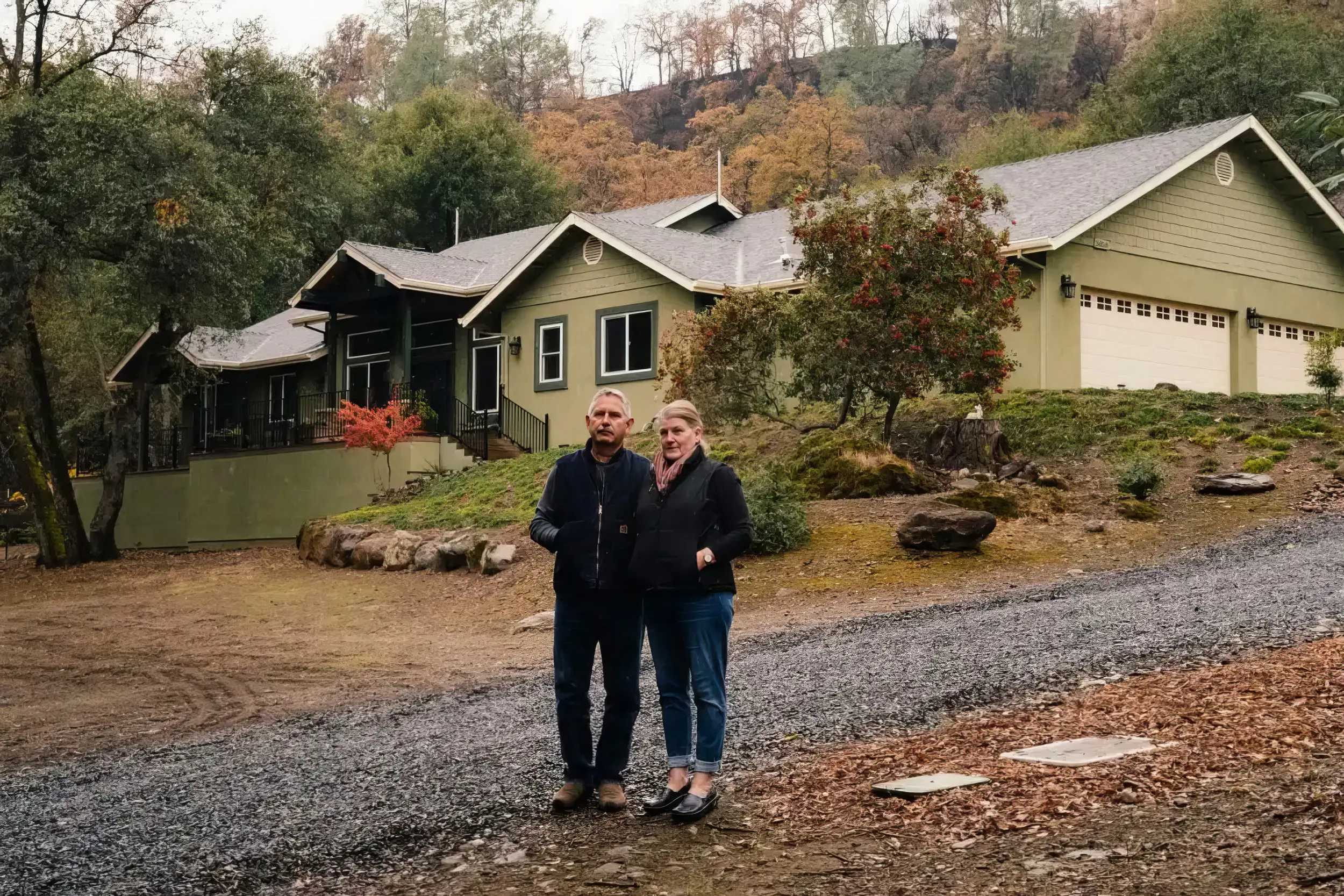
Literature Review of the State-of-the-Science in Wildfire Evacuation
The Marin Wildfire Prevention Authority commissions a review of available studies on wildfire evacuation to answer the following:
- What has been the leading cause of civilian deaths in past wildfire evacuations?
- What risk factors contributed to those deaths?
- What does a successful evacuation look like?
- What conditions can Marin County take to better support future evacuation?
- What tools or computer modeling can improve evacuation planning?
